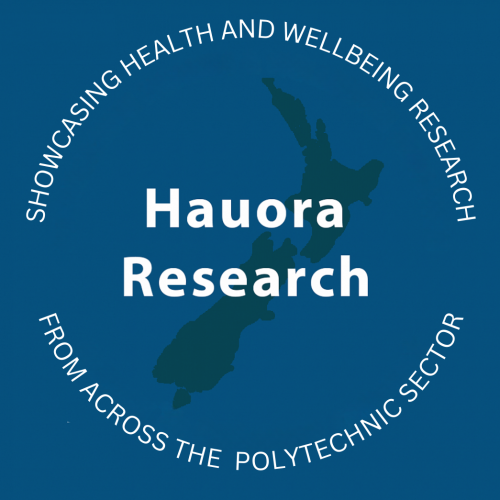
Child-to-child vision screening test proves you don’t have to be an expert
Otago Polytechnic: Due to a lack of a comprehensive vision screening programme, some New Zealand school children who need glasses for their learning are not getting them.
Dr Mary Butler, Professor of Occupational Therapy at Otago Polytechnic, has created a toolkit to facilitate peer-to-peer vision testing in schools with the goal of addressing this issue.
'I see my role as an occupational therapist to identify gaps and bridge them and there is definitely a need for more vision services in New Zealand. Children have elements of their vision screened as a new-born, and then again at four and 11 years old. However, the vision screening is not mandatory and many children fall through the cracks because of this,' she explains.
Butler obtained the New Zealand copyright for a vision screening flipchart from the Pocklington Trust in the United Kingdom. A significant innovation came about by chance when Butler, who was observing her occupational therapy students, Aleisha McMurray and Tahlia Hapuku, using the tool on a placement, saw they were using it as a peer-to-peer screening tool rather than testing the tamariki themselves.
'I had this little eureka bulb go on because the kids were totally engaged. I realised that I was seeing something unique that wasn't in the literature anywhere – young people could be responsible for their own health checking,' says Butler.

This led to a pilot study at Dunedin’s Kaikorai Valley High School to evaluate the feasibility of peer-to-peer vision testing with one hundred and twenty-two 14- and 15-year olds. The pilot confirmed that the concept was sound.
Butler’s subsequent research involved rolling the peer-to-peer vision project out at Tahuna Normal Intermediate School, also in Dunedin.
Butler worked with colleague Product Design Academic Leader Machiko Niimi, optometrist Kelechi Ogbuehi, a group of Tahuna Normal Intermediate School students and their teacher Karen Parker, along with two Otago Polytechnic students, Sarah Drummond and Curtis Stent. Together they used a process of co-design to re-develop the Eyes Right Toolkit for peer-to-peer vision testing. Improvements were made to the toolkit and the peer-to-peer process, including replacing the traditional letter chart with a tumbling E chart to stop tamariki memorising the order of the letters as well as ensuring the test was inclusive of tamariki who could not read. They also changed to working in groups of three instead of in pairs – one taking the test, one holding the vision chart, and another recording the results.
To validate the results of the peer-to-peer testing technique, Butler used a grant from the Participatory Science Platform to fund an electronic vision screener. The team used the screener to take a photo of the back of the eye and generate data on the children’s eyesight. Its use validated the results produced by the toolkit.

The testing indicated that of the 288 tamariki screened, 25 of them needed to go to an optometrist .
‘One of the challenges is to continue to explore ways to encourage parents and whānau to take tamariki to an optometrist when they are referred,’ says Butler.
The teaching module aims to provide a range of experiential learning about vision science and eye health, which raises the awareness of both teachers and tamariki about the relationship between vision and learning.
One of the most important discoveries of this study was that 16 out of the 25 tamariki went to the optometrist when they were referred through the teaching module process, and 71% of those referred by the flipchart actually got glasses This suggests that integrating the toolkit into the curriculum can play an important role in getting glasses for those tamariki who need them.
With child-to-child screening, teachers are informed about the children’s vision. They can prioritise this when considering academic performance and behaviour – making sure tamariki have their glasses with them and following up with parents regarding optometrist referrals.
‘For example, in one school we have started working with, it was discovered that a child with behavioural issues was having problems with his vision. Once he got glasses his behaviour improved immediately,’ explains Butler.
Another finding of the study was the fact that many tamariki who have already been prescribed glasses are not wearing them.
‘Over the course of seven visits, another 22 children who were supposed to be wearing glasses seldom had them with them,’ says Butler.

The toolkit and associated flexible teaching modules are nearing completion and will be placed on the Science Learning Hub in December 2020. The Science Learning Hub will also host a series of webinars to support teachers in the use of the toolkit in 2021.
Butler’s team is working to ensure that all tamariki, regardless of school decile or location, are made aware of the relationship between vision and learning.
‘This is just one small step, but we hope that it will play a role in building integrated eye health services in New Zealand,’ says Butler.
- The project received funding from the Participatory Science Platform, the Ombler Trust, the Rotary Club of Dunedin, VICTA (Visual Impairment Charitable Trust Aotearoa) and Otago Polytechnic.
- Mary Butler is professor of occupational therapy. Her research interests respond to the needs of people with disability and to the needs of the students who will go on to serve them as occupational therapists. She is a Board member of the Vision Impairment Charitable Trust Aotearoa. Contact the research team by emailing Machiko Niimi, or email Mary Butler.
- Find out more about Mary Butler’s research projects in:
– ‘Designing Together: Vision 2020: Co-Design Project’ in Scope (Health and Wellbeing), 5.
– ‘Social innovation to improve screening for children in New Zealand’ in Scope (Learning and Teaching), 8.
– 'Project 20 / 20: STEAM learning in action' in the Education Gazette.
– 'Sight Unseen Aotearoa' – radio show on OAR access radio. - Visit Otago Polytechnic's website.

